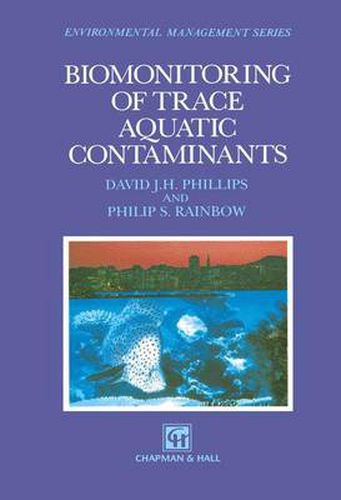Readings Newsletter
Become a Readings Member to make your shopping experience even easier.
Sign in or sign up for free!
You’re not far away from qualifying for FREE standard shipping within Australia
You’ve qualified for FREE standard shipping within Australia
The cart is loading…






This title is printed to order. This book may have been self-published. If so, we cannot guarantee the quality of the content. In the main most books will have gone through the editing process however some may not. We therefore suggest that you be aware of this before ordering this book. If in doubt check either the author or publisher’s details as we are unable to accept any returns unless they are faulty. Please contact us if you have any questions.
Twenty years ago, researchers wishing to identify contaminated areas in aquatic environments generally took water samples, and analysed them badly (as we have since discovered) for a few pollutants which were of topical note at the time (and which could be quantified by the methods then available). Today, the use of aquatic organisms as biomonitors in preference to water analysis has become commonplace, and many national and interna tional programmes exist around the world involving such studies. We believe that this trend will continue, and have complete faith in the methodology (when it is employed correctly). We hope that the following text assists in some part in attaining this goal, such that the quality of our most basic global resource -water - is adequately protected in the future. DAVE PHILLIPS, PHIL RAINBOW England, March 1992 vii Acknowledgements Our thanks for contributions to this book are due to several individuals and groups, for varying reasons. Firstly, a co-authored book is always a triumph, and we trust that the following text is an acceptable compromise of the views of two individual authors, on a complex and developing topic. Secondly, many of the ideas herein have crystallised over the last two decades as the field has grown, and we are individually and collectively grateful to a number of researchers for their insight and assistance.
$9.00 standard shipping within Australia
FREE standard shipping within Australia for orders over $100.00
Express & International shipping calculated at checkout
This title is printed to order. This book may have been self-published. If so, we cannot guarantee the quality of the content. In the main most books will have gone through the editing process however some may not. We therefore suggest that you be aware of this before ordering this book. If in doubt check either the author or publisher’s details as we are unable to accept any returns unless they are faulty. Please contact us if you have any questions.
Twenty years ago, researchers wishing to identify contaminated areas in aquatic environments generally took water samples, and analysed them badly (as we have since discovered) for a few pollutants which were of topical note at the time (and which could be quantified by the methods then available). Today, the use of aquatic organisms as biomonitors in preference to water analysis has become commonplace, and many national and interna tional programmes exist around the world involving such studies. We believe that this trend will continue, and have complete faith in the methodology (when it is employed correctly). We hope that the following text assists in some part in attaining this goal, such that the quality of our most basic global resource -water - is adequately protected in the future. DAVE PHILLIPS, PHIL RAINBOW England, March 1992 vii Acknowledgements Our thanks for contributions to this book are due to several individuals and groups, for varying reasons. Firstly, a co-authored book is always a triumph, and we trust that the following text is an acceptable compromise of the views of two individual authors, on a complex and developing topic. Secondly, many of the ideas herein have crystallised over the last two decades as the field has grown, and we are individually and collectively grateful to a number of researchers for their insight and assistance.